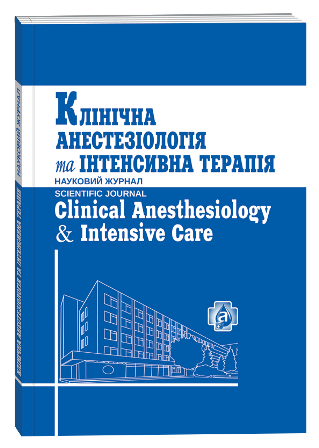INTENSIVE THERAPY OF DISORDERS IN THE HEMOSTATIC SYSTEM AND PREDICTING THE RISK OF VENOUS THROMBOSIS IN CHILDREN WITH SEPSIS
Keywords:
venous thrombosis, sepsis, logistic regression analysis, hemostasiogram, childrenAbstract
Background. The incidence of thrombosis in children is generally lower than in adults, ranging from 0.07 to 0.14 cases per 10,000 children and 5.3 cases per 10,000 hospitalized children. The reason for the lower prevalence of thrombosis in children is decreased plasma concentrations of coagulant proteins, increased amounts of α2- macroglobulin and an enchanced antithrombotic property of the vascular endothelium. The aim of the study was to examine the dynamics of changes in the hemostatic system in children with sepsis, the possibility of correcting enoxaparin and verify statistically significant indicators of hemostasis and their correlation with the level of cytokines. Methods. We examined 58 patients with sepsis aged 6–12 years. Patients were divided into two groups (control group included 38 patients, the experimental group — 20 patients). The patients of experimental group received low-molecular weight heparin (LMWH) (enoxaparin) in a dose of 0.01 ml/kg twice daily subcutaneously. To investigate the hemostatic profile we determined: prothrombin index, thrombin index, activated partial thromboplastin time, international normalized ratio, soluble fibrin-monomer complexes, antithrombin III, levels of D-dimers, time of XIIa-dependent fibrinolysis, platelet count. The levels of TNF-α, IL-6, IL-2 was determined by ELISA. We used logistic regression analysis to construct a predictive model of the probability of thrombosis of veins. Results. Patients receiving enoxaparin, demonstrated a significant increase in anti-inflammatory cytokine IL-2 on the stages of the research d5 and d7, compared with a control group of patients. It was established that the risk of venous thrombosis in patients with sepsis increases with increasing of TI, fibrinogen level, estimates for P-MODS, and with a decreasing of the evaluationon on ISTH scale. Conclusions. In applying in children with sepsis and hypercoagulation LMWH (enoxaparin) leads to an increase in the level of IL-2 and a significant reduction of the period of stay in the intensive care unit.
References
Thrombotic disease in critically ill children / M. C. McCrory, K. M. Brady, C. Takemoto [et al.] // Pediatr Crit Care Med. – 2011. – Vol. 12, N 1. – Р. 80–89.
Guzetta N. A. Principles of hemostasis in children: models and maturation / N. A. Guzetta, B. E. Miller // Pediatric Anesthesia. – 2011. – Vol. 21. – P. 3–10.
Sepsis, thrombosis and organ dysfunction / N. Semeraro, C. T. Ammollo, F. Semeraro [et al.] // Thrombosis Research. – 2012. – Vol. 129, N 3. – Р. 290–295.
Diagnosis of overt disseminated intravascular coagulation in a general hospital — meaning of the ISTH score system, fibrin monomers and lipoprotein complex formation / P. Cauchie, C. Cauchie, K. Z. Boudjeltia [et al.] // Am J Hematol. – 2006. – Vol. 81. – P. 414–419.
Баркаган З. С. Современные аспекты патогенеза, диагностики и терапии ДВС-синдрома / З. С. Баркаган, А. П. Момот // Медицина неотложных состояний. – 2013. – № 5 (52). – С. 146–152.







